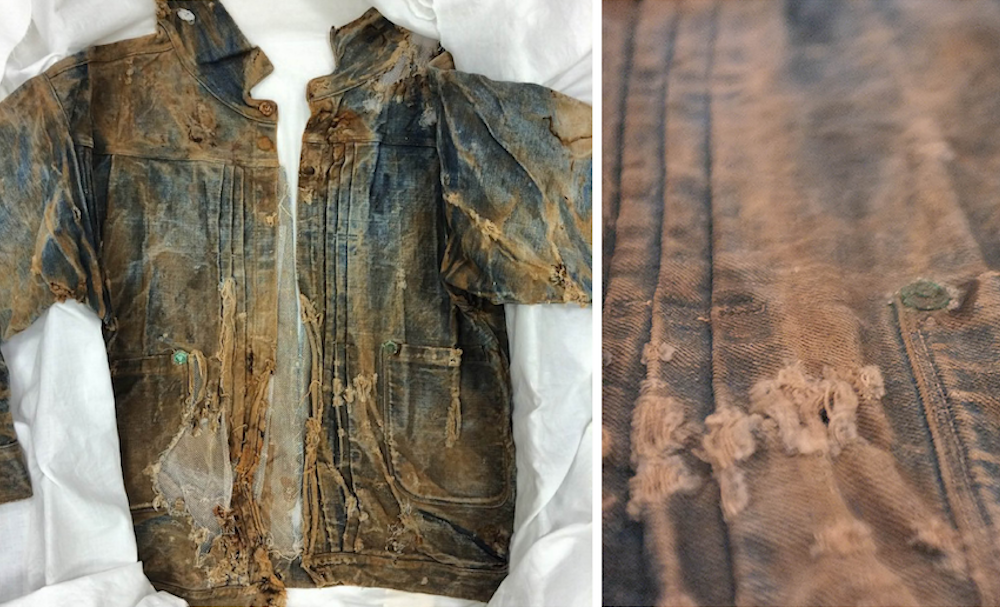
Blue Lenz Awards: The Making of Mohsin Sajid’s Brief History of Denim
This year, TENCEL™ held our first Blue Lenz Denim Video Awards during Bluezone, celebrating the best of the best from our Blue Lenz YouTube channel.

One of the winners was Mohsin Sajid for his Brief History of Denim with Fashion Revolution, Fashion Open Studio, and Isko. The Honorable Mention recipient film was a recorded presentation during Fashion Revolution Week on denim history.
To dive into the story behind the video, Carved in Blue chatted with Mohsin about the content.
Carved in Blue: What was the concept or inspiration behind your winning film?
Mohsin: I was asked by Tamsin Blanchard, who runs Fashion Open Studio (a part of Fashion Revolution) if I wanted to give a tour of my Endrime Denim studio during Covid. It was at the start of Covid and the first time Fashion Revolution had used Zoom. I said I was happy not only to give a tour, but to also do a bite-size mini denim history lecture to kick start the denim day they were doing.
I was very honored. Each year, I teach at a number of colleges and universities on denim history and carry out three-, five- or eight-hour versions of my lecture depending on the audience. This was my chance to do a cut-down version for the general public. I always wanted to give a more bite-size version.
Carved in Blue: Why did you feel it was important to explore this topic?
Mohsin: The audience was mostly young professionals and people who wanted to learn about sustainable denim. Not many people teach denim history, or know much about it. I’ve been teaching denim history professionally since 2005, so it was fun to tell this riveting story and open everyone’s minds to denim history—from miners, cowboys, art and film, to the formation of the rivet, and milestones in history. It’s honestly one of the fun parts—that and making jeans.

Carved in Blue: How did this content come together?
Mohsin: I actually started this presentation back in 2005, but each year I refine it: adding pages, cleaning up, enhancing it. This was a very bite-size or cut-down version—down to 66 pages from 180. I also normally play about 30 short videos, but as I only had one hour plus Q&A and tour, I had to keep my talk to 20-30 mins.
The Denim History lecture I gave started with cotton, yarn and denim manufacturing processes: the cotton process, from harvest to yarn; denim terminologies; strengths of using original shuttle looms; different weaves; different thicknesses and their strengths; RHT (right hand twill), LHT (left hand twill), etc.; selvedge denims versus non-selvedge; different types of washing treatments and finishes; anatomy of a five-pocket jean; and thread sizes and colors and metal sundries and colors in relation to denim shade. I also presented a selection of vintage pre-1920s pieces and a selection of 30 other denim samples from Endrime Archive, and talked through construction methods and special details in each jean. I also went through the manufacturing from denim factories in the USA, Turkey, China and Japan. I ended with sustainable washing and finishing. It was jam-packed!

Carved in Blue: What was the most challenging part of creating this video?
Mohsin: I actually enjoy talking—especially about subjects I know well. It was fairly easy. The only hard part came from omitting slides 180 down to 66. Fashion Open Studio and Fashion Revolution kindly recorded the talk, and within a few hours it was uploaded on Blue Lenz so many more people could enjoy it.
Carved in Blue: Why is video such a powerful medium for denim storytelling?
Mohsin: The power of visuals, and moving images. You can get your energy and passion across and spread knowledge, even in 30 seconds. Covid has actually helped education, in my point of view, as it gives a chance for someone to focus and a subject—be it five, 10, or even one hour like I did.
My wife Sadia and I enjoy the storytelling part. As everyone has a laptop now and smartphone, we are used to watching short films. Many years ago, I was taught to create mood boards and tell a story in three images. Now it’s about telling a story in under 30 seconds on film. It’s a superb medium, and one that the young and adults still can enjoy together.






